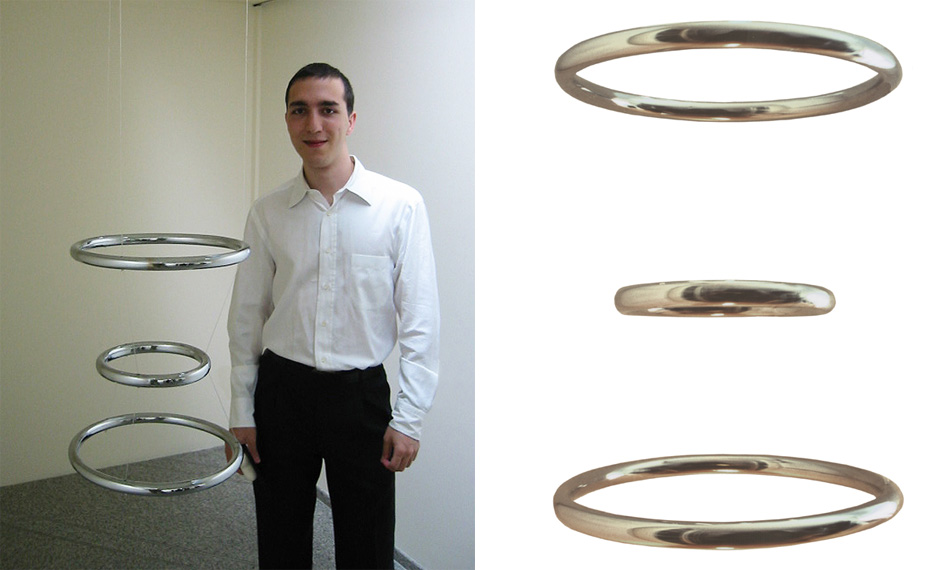
90 60 90, 2000
3 chrome rings
35,4” x 23,6” x 35,4”
The work is comprised by 3 chrome rings of 90cm, 60cm, and 90cm, alluding to the "perfect" measurements considered in beauty contests and miss pageants. It represents the materialization of an ideal beauty canon, a paradigm which started to be accepted in the mid 50’s and now is the prescription to acquire a perfect female body.
One of the cardinal points that supports this work is the utopian dream of discovering a universal language, a language that transcends the communicational boundaries imposed by past and present cultures. In this sense, the artist followed a mathematical path that has been explored not only by mathematicians but also by philosophers, writers, artists, and intellectuals.
For many cultures and religions, three denotes divine perfection. In 90 60 90 the unity of the three rings corresponds to the unity of every circle, which also manifests as a trinity: center, radius and circumference; as Honoré de Balzac mentioned, “three is the formula of all creation.”
By making this work, beauty was translated from an ideal form into a geometric structure, where subjectivity and superfluity vanished. According to Michelangelo, beauty is “the purgation of the superfluous,” while Aristotle defines beauty as “order, symmetry and precision.” As a result, 90 60 90 surpasses the ephemeral condition of the body and accesses the everlasting level of intellect.
Collection: Private.